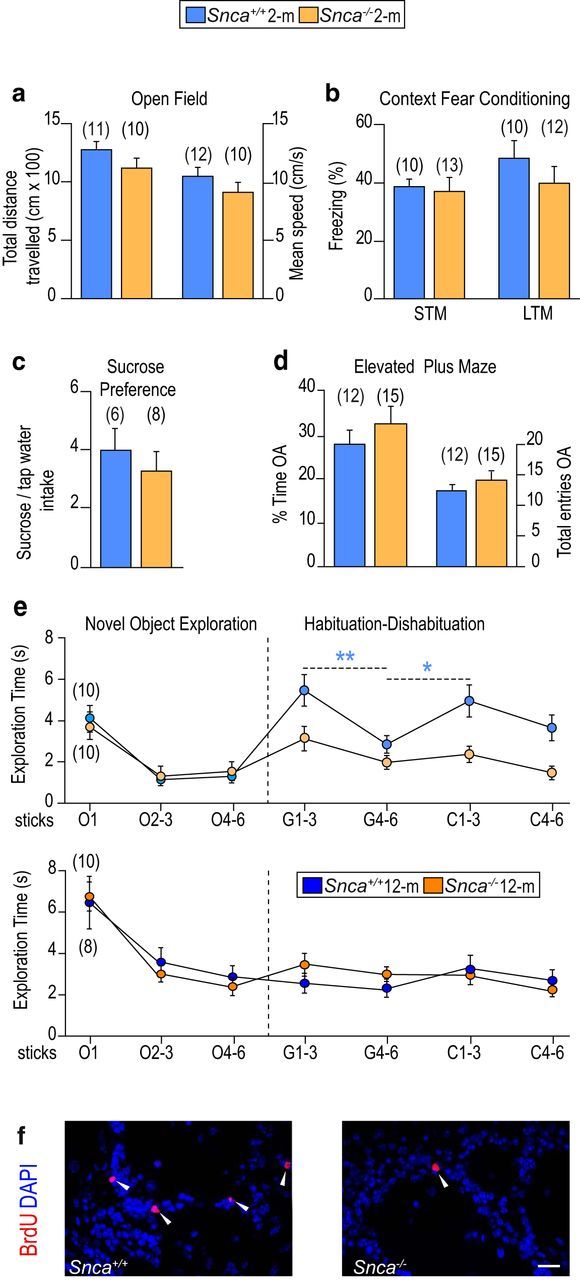Figure 1.

Snca-null mice exhibit deficits in olfaction and adult neurogenesis. Behavioral analysis of 2 month Snca wild-type (Snca+/+) and mutant (Snca−/−) mice showing (a) the total distance traveled (in centimeters × 100) and the mean speed (in centimeters per second) in an open field test for locomotor activity; (b) the proportion of freezing time in context fear conditioning with short-term memory test (STM) and long-term memory test (LTM); (c) the sucrose to tap water intake ratio in a sucrose preference test; and (d) the proportion of time spent and the total number of entries in the open arms (OA) of an elevated plus maze. e, Olfactory habituation-dishabituation test of 2 month (above) and 12 month (below) mice of different genotypes. Exploration time (in seconds) of successive sticks soaked in mineral oil (O), geraniol (G), or citralva (C). No differences were observed in the response to O sticks. Snca+/+ mice reacted to geraniol sticks 1–3 and then habituated during subsequent 4–6 exposures, and reacted again to the first presentations of C sticks. Snca−/− mice, however, displayed lower olfactory exploration and no reaction to the second stimulus. At 12 months, the two genotypes showed age-related olfactory deficits but no differences between them. f, Representative immunofluorescent detection of BrdU+ (red) in OB coronal sections of Snca+/+ and Snca−/− mice. White arrowheads point at BrdU+ cells. Data are mean ± SEM of a number of independent mice indicated in parentheses. *p < 0.05 (Student's t test). **p < 0.01 (Student's t test). Scale bar: f, 20 μm.
